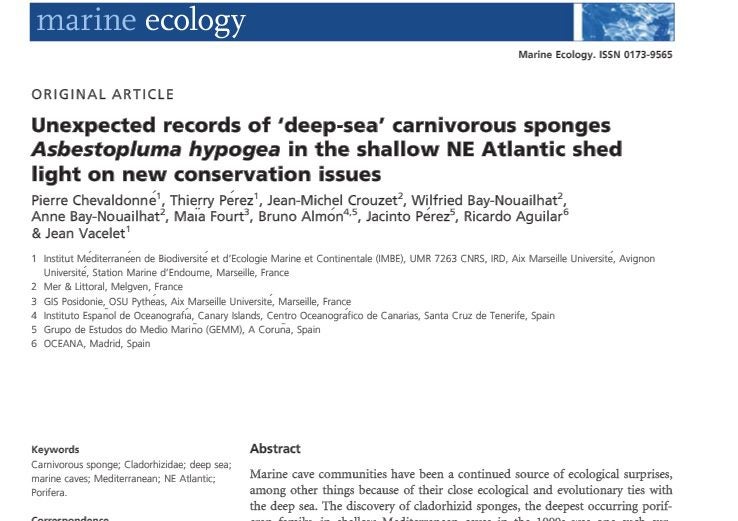Report | junio 12, 2015
Unexpected records of ‘deep-sea’ carnivorous sponges Asbestopluma hypogea in the shallow NE Atlantic shed light on new conservation issues

Marine cave communities have been a continued source of ecological surprises, among other things because of their close ecological and evolutionary ties with the deep sea. The discovery of cladorhizid sponges, the deepest occurring poriferan family, in shallow Mediterranean caves in the 1990s was one such surprise, leading to the generally accepted hypothesis that the whole family was carnivorous, an unprecedented feeding mode for sponges. The recent observation of the cave species Asbestopluma hypogea in the Mediterranean bathyal, confirmed the view that some shallow caves can occasionally shelter otherwise deep-dwelling species. Here we present new distribution data of A. hypogea, from deep Mediterranean locations, and for the first time from Atlantic locations. Among the new Atlantic records, the most surprising ones are located in three different geographic areas (Ria de Arousa, Groix Island and Cherbourg) of the NW European coasts, from the Iberian Peninsula to the English Channel, where A. hypogea reaches SCUBA depths (5–50 m), while not sheltered in marine caves. The carnivorous sponge however reaches its shallowest occurrence (5 m), in a small cave at Groix Island. The ecological significance of these discoveries, particularly the very patchy distribution and peculiar dynamics, are noteworthy, and the shallow occurrence of A. hypogea, together with other deep-water or uncommon species, constitute unique assemblages that must be considered in conservation plans.
More info : http://onlinelibrary.wiley.com

